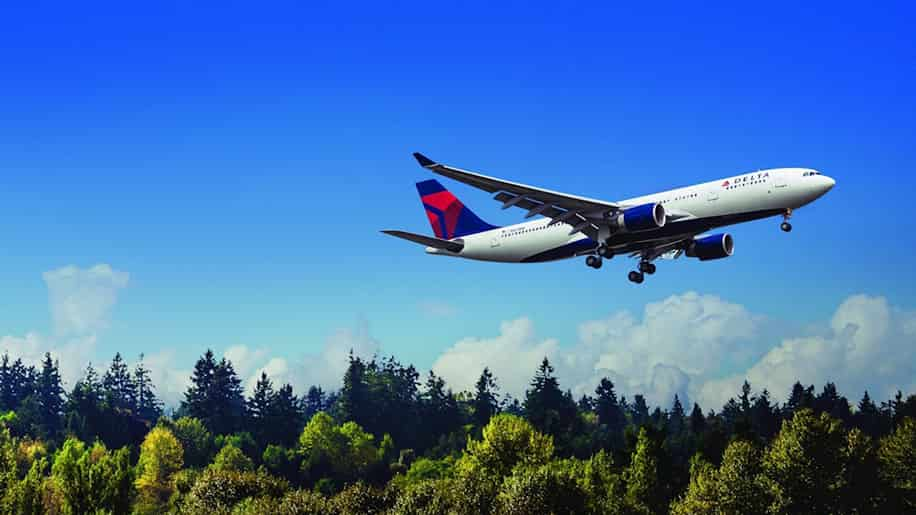Airlines are moving past simple carbon offsets and deploying a broad suite of technological, operational, and fuel-based innovations to decarbonize aviation. Key advances in sustainable aviation fuel (SAF), aircraft design, flight operations analytics, and alternative propulsion are driving measurable emission cuts today and paving the way to net-zero by 2050.
1. Scaling Sustainable Aviation Fuel (SAF)
SAF, derived from waste oils, agricultural residues, or captured CO₂, can reduce lifecycle CO₂ emissions by up to 80% versus conventional jet fuel.
- Half of global airlines plan SAF sourcing by 2026, with 83% adoption expected within three years.
- Major carriers’ offtake agreements include:
– Delta–Cosmo Oil: 200 M gal starting 2025 (Asia Pacific)
– United–Twelve: 260 M gal e-fuel by 2028 (Power-to-Liquid)
– KLM–SkyNRG: 75 M gal used-cooking-oil blend from 2026 - Governments are imposing SAF blending mandates (e.g., EU: 2% in 2025, rising to 70% by 2050; Singapore: 1% in 2026).
Investments in book-and-claim systems allow airlines worldwide to report SAF use regardless of physical supply at each airport, accelerating demand growth.
2. Next-Generation Aircraft & Propulsion
Fuel-Efficient Airframes
- Composite-intensive models (Boeing 787, Airbus A350) cut fuel burn by ~25% per seat versus previous-generation jets.
- Aerodynamic innovations (NASA X-57 Maxwell, blended-wing designs) promise further drag reduction and fuel savings.
Electric & Hydrogen Propulsion
- Regional electric aircraft prototypes (e.g., Ampaire’s hybrid-electric Cessna 337) target short-haul routes with zero-emission taxi and cruise phases.
- Airbus’s ZEROe concepts explore hydrogen combustion and fuel-cell propulsion for commercial flights by 2035.
3. Data-Driven Flight Operations
IATA Fuel Efficiency Gap Analysis (FEGA)
- Audits reveal average fuel savings of 4.4% per airline through optimized flight planning, continuous descent approaches, and ground operations improvements.
- Since 2005, FEGA has identified potential to avoid 4.76 Mt of fuel, equating to 15.2 Mt CO₂ abated.
IATA FuelIS Analytics
- FuelIS benchmarks fuel burn per operational tonne-kilometer against aggregated industry data, enabling airlines to pinpoint inefficiencies in dispatch, routing, and aircraft utilization.
- Over 215 airlines contribute anonymized flight-data to drive strategic and tactical fuel-saving decisions.
AI-Empowered Weight Reduction
- Dynamic retail systems tailor onboard inventory to passenger demand, cutting excess weight and fuel for every flight.
- AI-driven supply-chain optimization reduces waste and aligns catering orders, further trimming payload.
4. Innovative Infrastructure & Ground Operations
- SAF refueling hubs: While only 13% of airports offer SAF today, 42% plan installations by 2026 to support book-and-claim and direct fueling.
- Electrified ground fleets (tugs, buses) and solar-powered terminals are increasingly adopted at major hubs to lower airport-related emissions.
5. Advancing Carbon Removal Partnerships
Beyond SAF and efficiency, airlines are investing in direct air capture and carbon mineralization projects to secure permanent CO₂ removal credits.
- Partnerships with DAC providers like Climeworks ensure a portion of emissions is captured and stored indefinitely.
By integrating low-carbon fuels, cutting-edge airframes, advanced analytics, and infrastructure upgrades, airlines are achieving incremental emission reductions today and laying the groundwork for a net-zero aviation future. Continuous collaboration across carriers, regulators, fuel producers, and technology developers is essential to sustain this momentum toward 2050.

